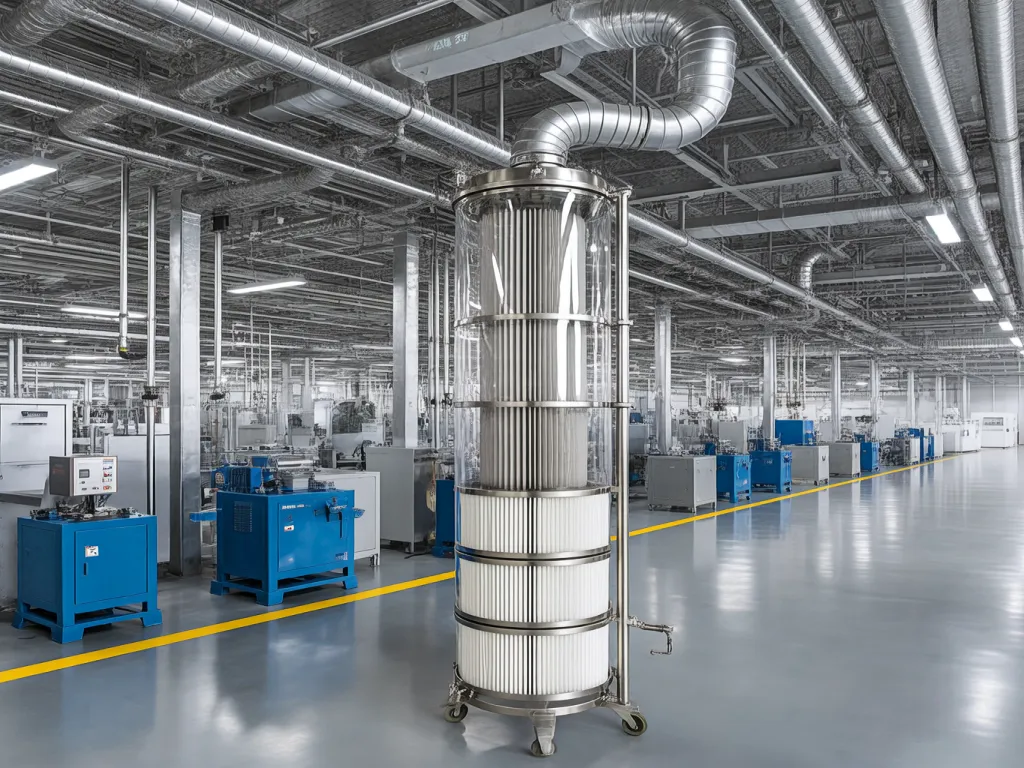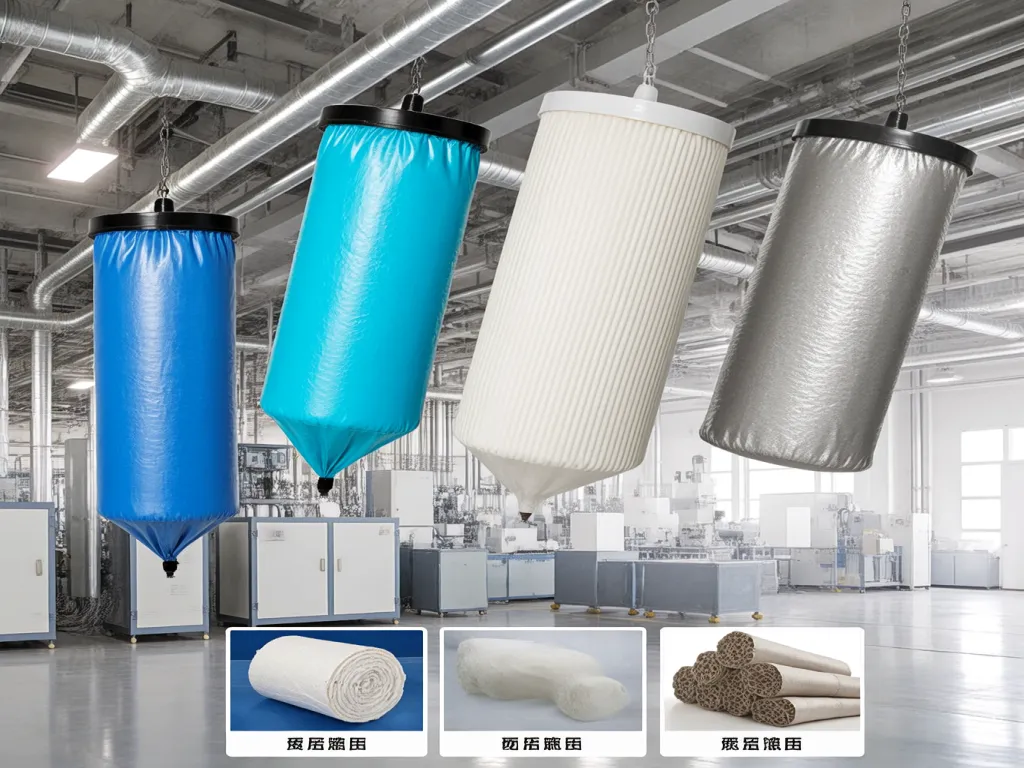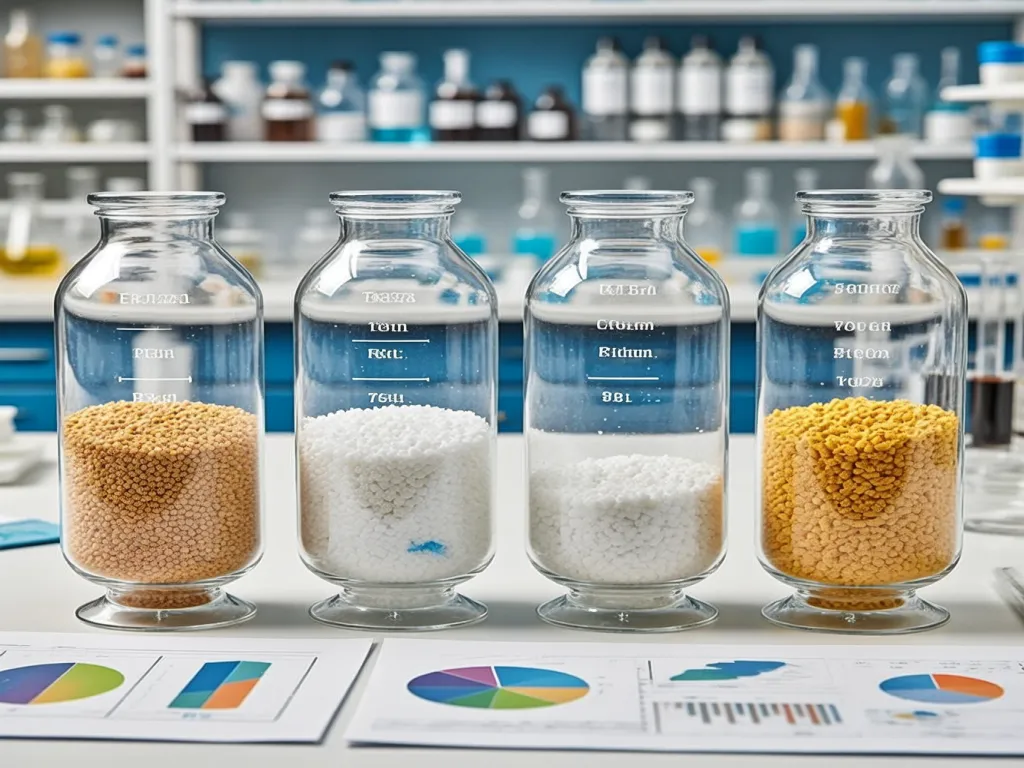Unlock Efficiency: Essential Parts of Bag Filter Housing

When it comes to industrial filtration, the efficiency of your system hinges on one critical factor: the essential parts of bag filter housing. From material selection to performance optimization, every detail matters. But how do you ensure you’re choosing the right components for your specific needs? Let’s dive into the science behind filter bag materials and uncover the secrets to maximizing your filtration system’s potential.

Filter Bag Material Basics: An Overview of Common Materials and Their Characteristics
When it comes to bag filter housing, the choice of filter bag material is not just a detail—it’s the cornerstone of efficient filtration. Imagine trying to catch fine dust particles with a net made of coarse rope; it simply won’t work. Similarly, selecting the right filter bag material ensures that your bag filter housing operates at peak performance, capturing contaminants effectively and extending the lifespan of your entire filtration system. Let’s dive into the world of filter bag materials, exploring the most common options—polyester, polypropylene, and fiberglass—and understanding their unique properties.
Polyester filter bags are the workhorses of the filtration world. They’re known for their excellent chemical resistance, making them ideal for a wide range of industrial applications. Whether you’re dealing with acidic gases or alkaline solutions, polyester holds its ground, maintaining structural integrity and filtration efficiency. But that’s not all. Polyester also boasts impressive durability, withstanding repeated cleaning cycles without significant degradation. This means fewer replacements and lower long-term costs for you. Plus, its relatively low cost compared to other materials makes it a popular choice for budget-conscious projects without compromising on quality. For those seeking reliable polyester options, consider exploring durable PTFE star bottom filter bags as a premium choice.
Moving on to polypropylene, this material shines in environments where moisture is a concern. Polypropylene filter bags are inherently hydrophobic, meaning they repel water rather than absorbing it. This property is crucial in applications like wastewater treatment or chemical processing, where water can clog filters and reduce efficiency. Additionally, polypropylene is chemically inert, resistant to most acids and bases, making it a versatile option for various industrial settings. Its lightweight nature also contributes to easier handling and installation, reducing downtime during filter changes.
Now, let’s talk about fiberglass—a material that’s not afraid of heat. Fiberglass filter bags excel in high-temperature applications, where other materials might melt or degrade. They can withstand continuous operating temperatures up to 500°F (260°C) and even higher for short periods, making them indispensable in industries like incineration, cement production, and metal processing. Beyond temperature resistance, fiberglass offers excellent filtration efficiency, capturing fine particles with ease. However, it’s worth noting that fiberglass can be more brittle than polyester or polypropylene, requiring careful handling to avoid damage during installation and maintenance.
Polyester: The All-Rounder
Polyester filter bags are the go-to choice for many industrial applications due to their excellent chemical resistance. They can handle a broad spectrum of chemicals, from mild acids to strong alkalis, without losing their structural integrity. This makes them ideal for use in chemical plants, pharmaceutical manufacturing, and food processing facilities where chemical exposure is a concern. Additionally, polyester’s durability ensures long service life, even under continuous operation, reducing the need for frequent replacements. For specialized needs, consider custom double-layer fiberglass filter bags, which combine the benefits of polyester and fiberglass for enhanced performance.
Polypropylene: The Moisture Master
If your filtration process involves water or other liquids, polypropylene filter bags are your best bet. Their hydrophobic nature means they won’t absorb moisture, preventing clogging and maintaining consistent airflow. This is particularly beneficial in wastewater treatment plants, where water-laden air needs to be filtered efficiently. Moreover, polypropylene’s resistance to a wide range of chemicals, including many solvents and oils, expands its applicability across various industries, from automotive to textile manufacturing.
Fiberglass: The High-Temperature Hero
When the operating environment reaches extreme temperatures, fiberglass filter bags step up to the plate. Their ability to withstand high heat without melting or degrading makes them essential in industries like power generation, where exhaust gases can exceed 500°F. Fiberglass also offers superior filtration efficiency, capturing even the smallest particles, which is crucial for meeting stringent environmental regulations. However, due to its brittleness, fiberglass filters require careful handling during installation and maintenance to prevent breakage. For those operating in high-temperature environments, exploring wholesale pleated dust filter bags may offer additional benefits in terms of filtration area and efficiency.

Filtering Efficiency and Material Relationship: Analyzing the Impact of Different Materials on Particle Retention Rate, Air Permeability, and Filtration Speed
When it comes to the essential parts of bag filter housing, the filter bag material is undoubtedly a key factor that directly influences the overall filtering efficiency. You might be wondering, ‘How exactly do different materials affect the performance of bag filters?’ Well, let’s dive deep into this fascinating topic. First, let’s understand the core metrics we’re dealing with: particle retention rate, air permeability, and filtration speed. These three aspects are intertwined and play a crucial role in determining how well your bag filter housing performs.
Starting with polyester, a commonly used filter bag material. Polyester filter bags are known for their excellent strength and durability. In terms of particle retention rate, polyester can effectively trap a wide range of particle sizes. Its fine fiber structure allows it to capture even small particles, ensuring a high level of filtration. However, when it comes to air permeability, polyester has a moderate performance. While it allows air to pass through, it may not be as breathable as some other materials. This can impact the filtration speed, especially in high – volume air – flow applications.
Now, let’s turn our attention to polypropylene. Polypropylene filter bags are popular for their chemical resistance and cost – effectiveness. Regarding particle retention, polypropylene can handle a variety of particles, but it may not be as efficient as polyester in capturing very fine particles. On the positive side, polypropylene excels in air permeability. It has a relatively open structure, which allows for a high flow rate of air. This means that in applications where fast filtration is required, polypropylene can be a great choice. But, keep in mind that its lower particle retention rate for fine particles might be a drawback in some industrial settings.
Glass fiber is another material worth discussing. Glass fiber filter bags are known for their high – temperature resistance and excellent particle retention capabilities. They can capture extremely fine particles with great precision. This makes them ideal for applications where high – purity filtration is essential, such as in the pharmaceutical or semiconductor industries. However, glass fiber has relatively poor air permeability. The dense fiber structure restricts the flow of air, which can slow down the filtration speed. So, if you’re dealing with a situation where you need to balance high particle retention with a reasonable filtration speed, glass fiber might require some careful consideration. For instance, when selecting filter bags for specific high – purity applications, it’s crucial to weigh the benefits of glass fiber against its limitations. And if you’re looking for specialized filter bags like PTFE filter bags, which offer unique properties for certain industrial needs, you’ll need to evaluate how they fit into your overall filtration strategy.
Let’s not forget about nomex. Nomex filter bags are designed to withstand high temperatures and harsh chemical environments. In terms of particle retention, nomex can effectively trap particles, although its performance may vary depending on the specific particle size distribution. When it comes to air permeability, nomex offers a moderate level. It allows for a decent flow of air while still maintaining good filtration. The filtration speed of nomex filter bags is influenced by both its particle retention and air permeability characteristics. In high – temperature industrial processes, nomex can be a reliable option, but you need to assess whether its filtration speed meets your production requirements.
So, how do you choose the right material for your bag filter housing? It all depends on your specific industrial needs. If you’re operating in an environment with a high concentration of fine particles and require a high level of purity, glass fiber might be your best bet, despite its lower air permeability. On the other hand, if you need a fast – flowing filtration system and can tolerate a slightly lower particle retention rate for fine particles, polypropylene could be the way to go. And if you’re looking for a balance between strength, durability, and moderate performance in all three aspects, polyester is a solid choice.
In conclusion, the relationship between filter bag material and filtering efficiency is complex yet crucial. By understanding how different materials affect particle retention rate, air permeability, and filtration speed, you can make an informed decision when selecting the essential parts of your bag filter housing.

Application Scenario Matching: Recommending the Most Suitable Filter Bag Materials Based on Industrial Environments (e.g., High Temperature, Corrosive Gases)
When it comes to industrial filtration, the environment isn’t just a backdrop—it’s a critical factor that shapes every decision, especially the choice of filter bag materials. Imagine your filter bag as a warrior battling harsh industrial conditions. Just like a warrior needs the right armor, your filter bag needs the right material to withstand the challenges it faces daily. Let’s dive into how different industrial environments demand specific filter bag materials for optimal performance.
First up, high-temperature environments. These are the fiery furnaces of industry, where temperatures soar and conventional materials would melt away like ice cream on a summer day. For such scenarios, materials like PTFE (Polytetrafluoroethylene) and P84 (Polyimide) are your go-to heroes. PTFE, with its remarkable heat resistance up to 260°C (500°F), laughs off high temperatures, making it ideal for incinerators, power plants, and cement kilns. P84, on the other hand, boasts excellent thermal stability and chemical resistance, handling temperatures up to 240°C (464°F) with ease. It’s a top pick for coal-fired boilers and waste incineration, where both heat and chemical attacks are relentless.
Now, let’s talk about corrosive gases. These are the silent assassins of the industrial world, eating away at materials over time. In environments laden with acids, alkalis, or other corrosive substances, you need a filter bag that can stand its ground. Here, materials like Ryton (Polyphenylene Sulfide) and fiberglass reinforced with PTFE shine. Ryton offers exceptional chemical resistance, withstanding a wide pH range and resisting hydrolysis, making it perfect for chemical processing, metal plating, and pharmaceutical applications. Fiberglass, when reinforced with PTFE, becomes a powerhouse against corrosive gases, maintaining its integrity even in the harshest chemical environments.
But what if your industrial setting throws both high temperature and corrosive gases at your filter bag? Fear not, for there are materials designed to handle this double whammy. Aramid fibers, such as Nomex and Kevlar, are renowned for their heat resistance and chemical stability. They can withstand temperatures up to 204°C (400°F) while resisting most acids and organic solvents. This makes them ideal for applications like asphalt mixing, carbon black production, and even some chemical processing scenarios where both heat and chemicals are present.
Let’s not forget about moisture-laden environments. While not as extreme as high temperatures or corrosive gases, moisture can still wreak havoc on filter bags, leading to clogging, reduced efficiency, and even premature failure. In such cases, materials like polyester and polypropylene, when treated with hydrophobic coatings, can provide a barrier against moisture while maintaining good filtration performance. These materials are often used in food processing, pharmaceuticals, and other industries where moisture control is crucial.
So, how do you choose the right filter bag material for your specific industrial environment? Start by assessing the conditions your filter bag will face. What’s the temperature range? Are there any corrosive substances present? How about moisture levels? Once you have a clear picture, match these conditions with the material properties we’ve discussed. Remember, the goal is to find a material that can withstand the environment while maintaining optimal filtration performance.
In conclusion, selecting the right filter bag material for your industrial environment isn’t just about durability—it’s about ensuring your filtration system operates at peak efficiency, minimizing downtime, and maximizing productivity. By understanding the unique demands of your industrial setting and matching them with the right material, you’re not just choosing a filter bag; you’re investing in the longevity and success of your entire filtration process. So, are you ready to equip your filter bag with the armor it deserves?
High-Temperature Resilience: PTFE and P84 in Action
In high-temperature environments, the choice of filter bag material can mean the difference between smooth operation and catastrophic failure. PTFE and P84 stand out as materials that can withstand extreme heat while maintaining filtration efficiency. PTFE’s non-stick properties also reduce the buildup of particulates, ensuring consistent airflow even at high temperatures. P84, with its unique fibrid structure, offers high surface area for filtration, making it effective in capturing fine particles at elevated temperatures.
Corrosive Gas Defiance: Ryton and Fiberglass Reinforced with PTFE
Corrosive gases pose a significant threat to filter bag materials, but Ryton and fiberglass reinforced with PTFE rise to the challenge. Ryton’s chemical inertness makes it resistant to a wide range of corrosive substances, ensuring longevity in harsh chemical environments. Fiberglass, when combined with PTFE, gains enhanced chemical resistance and thermal stability, making it suitable for applications where both corrosive gases and high temperatures are present.
Dual Threat Handling: Aramid Fibers for Extreme Conditions
When industrial environments throw both high temperatures and corrosive gases at your filter bag, aramid fibers like Nomex and Kevlar become indispensable. These materials offer a unique combination of heat resistance and chemical stability, allowing them to perform reliably in the most demanding conditions. Their use in applications like asphalt mixing and carbon black production highlights their versatility and durability.
In the world of industrial filtration, the essential parts of bag filter housing—particularly the filter bag material—are the linchpins of performance. By understanding the nuances of materials like polyester, polypropylene, and fiberglass, you can tailor your system to handle specific challenges, from high temperatures to corrosive gases. Remember, the right material choice isn’t just about efficiency; it’s about longevity and cost-effectiveness too. Ready to upgrade your filtration game? Explore our guide on filter bag material selection and take the first step toward a more efficient, reliable system. What’s stopping you from unlocking the full potential of your bag filter housing?

